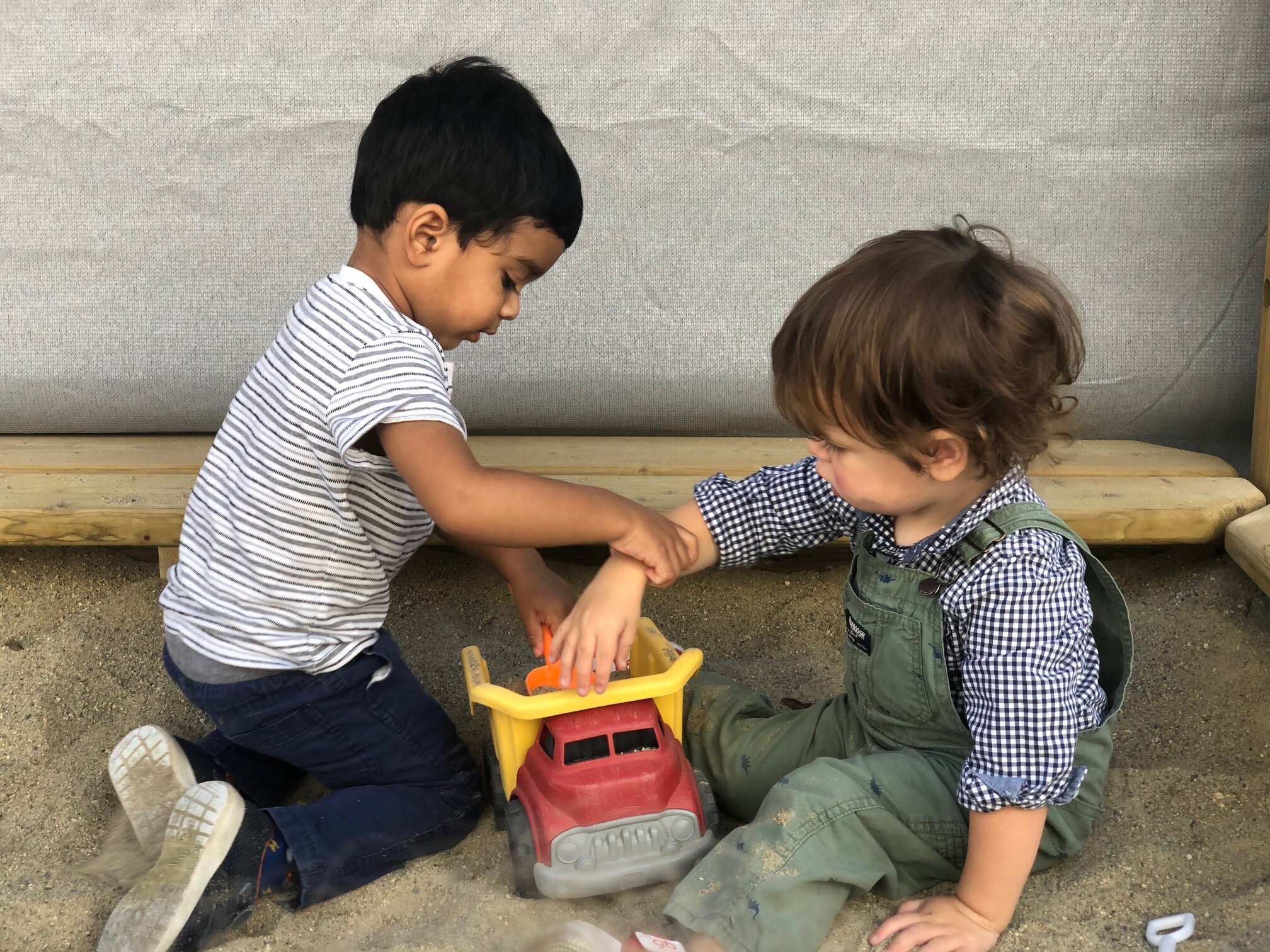Help Your Child Navigate Aggressive Behavior
All people are faced with feelings of anger and aggression at times, including children. While most adults are able to navigate their emotions and channel negative energy, children are just learning how to manage these feelings. When a child feels threatened, scared, angry, left out or embarrassed, he or she may express these emotions by biting, kicking, hitting, pushing or pulling hair.
When aggressive behavior is exhibited by children under the age of 5, it is most often not the result of malicious intent. The behavior is typically associated with elements of their current environment, and is either calmed or exacerbated by the way in which we respond. The way in which a parent or teacher handles aggressive behavior is so much more important than the incident itself. We consider the incident a valuable opportunity and a teachable moment, and we place a heavy emphasis on preventative measures.
be an exapmle
Remember that your child will take on your mood and will imitate your responses. Maintain control of your temper, and be mindful about how you treat others in front of your little sponge. If you yell at your child, you can expect your child to yell at you and at others. Model a calm, kind demeanor, and your child will learn to respond as you do.
consider the environment
Oftentimes we can prevent aggressive behavior before it happens. It’s imperative that parents and teachers are thoughtful about setting little ones up for success, and at times, the environment contributes to the problem. Keep in mind that your expectations for your child should be in line with what is developmentally appropriate. That said, if your child is the only 2 year old in a group of 5 year olds, problems may arise when the older children leave your little one out of play. Likewise, when your 5 year old is in a group full of babies, he or she might not understand why the little ones snatch his or her toys or cry loudly. Also, make sure that your child is entering situations with a full belly and enough sleep. Just like adults, when little ones are hungry or tired, they have a harder time keeping their emotions in check.therapy is by answering a simple question: What occupies your time? On a daily basis this may consist going to work, completing errands, spending time with family and friends, making breakfast or dinner, going to a yoga class, taking a shower, and sleeping.
Now answer the next question: What occupies your preschooler’s time? The answer may be playing with family, eating meals, going to school, playing at the park with a friend, taking a bath, and sleeping. The answers to those two questions are you and your preschooler’s daily occupations.
At Peekadoodle, pediatric occupational therapy can be defined as improving and facilitating the engagement of a child during his or her daily occupations in the preschool or home environment. This ultimate goal is accomplished by focusing on fine and gross motor skills, self-regulation skills, social interaction skills, and self-care skills in the child’s preschool environment.
prepare your child
Be diligent about making it a habit to prepare your child before going into a new situation. Take a moment to explain where you are going and what to expect. For example, if you’re going to a busy place, give your little one a heads up. Tell them, “It may be crowded at this birthday party / playground / mall, you might want to stay close to me.” Similarly, if you are going somewhere your child will likely be the odd-one out, inform your child, “We are going to your big brother’s baseball game and you may be bored, would you like to take some toys to play with while we are there?”
in the moment
When the moment arises and your child expresses frustration or anger by becoming aggressive toward others, remove him or her from the situation. Taking your little one away from the situation will help avoid further aggression or retaliation from the other child. Speak calmly and quietly and acknowledge your child’s feelings. Ask him how his behavior might have made the other child feel, and remind him about a time when he were hurt and how that felt. Encourage your child to apologize, although it may be wise to warn him that the other child might still be upset. Brainstorm ways that he can make the other person feel better, and what he can do next time, so that he doesn’t hurt his friends.
Redirect the Energy
If you see that your child is exhibiting aggressive behavior on a regular basis, you can attempt to redirect the negative energy. For example, if your child is hitting others, you can state “You must need to work out those arms! Let’s go outside and throw the ball.”
All in all, aggressive behavior may be developmental, however how you handle it during the early years sets the stage for what’s to come. By being mindful and diligent in your approach, you can give your child the valuable life skill of navigating their emotions and developing self-control.

